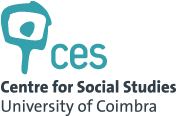Theses defended
Entre as Imagens e os Espíritos: Encontros com a Memória da Guerra de Libertação na Guiné-Bissau
April 24, 2019
Post-Colonialisms and Global Citizenship
António Sousa Ribeiro
e
Bruno Sena Martins
Considering images as instruments of memory, as objects which can bring the past into the present and, also, lead us to imagined alternatives for the future, this dissertation analyzes the filmography produced in the liberation war in Guinea-Bissau. After discussing how post-colonial approaches can inform, methodologically, the analysis of images, I examine the representation of one the most celebrated anti-colonial struggles on the African continent. For this, it was crucial to undertake a profound historical reflection, covering the colonial and pre- colonial period, as well as a careful review of the different episodes of political instability that have been reproduced since independence. Particular attention was paid to the discourse of the PAIGC, the liberation movement that declared itself a party from the outset, especially to the almost singular voice of Amílcar Cabral. The many rhetorical exercises that the historical leader left as written legacies were placed in dialogue with the various forms of social and political organization maintained by the rural population, either in resistance to or in articulation with the different states that have proposed to govern them. This exercise in contrast was fundamental for the analysis of the films produced by the different foreign filmmakers who visited the so-called "liberated zones", as well as the films directed by the four Guinean filmmakers trained in Cuba with the intention of creating their own filmic memory. In the assembled film corpus, we find the willingness to create another depiction of those who until then were hostages of the colonial images, with all of their political implications, marked by an enormous violence, and what this entailed. However, the ensuing "liberation images" reveal that this process was also marked by new absences and exclusions, which the ethnographic research in Unal village demonstrated in greater depth and detail. I am referring in particular to the broad arena of political cosmology, a field of permanent dialogue between the living and the dead, among men, women, and spirits, which reveals other determining forces, both for armed resistance and for difficult post-war social reconciliation. Considering that "colonialism as a social relation survived colonialism as a political relation" (Santos, 2013: 10), this hidden field further demonstrates how strategies of resistance to colonial domination have been continuously reinvented.
Keywords: Liberation Struggle, Guinea Bissau, Cinema, Political Cosmology, and Memory
Public Defence date
Doctoral Programme
Supervision
Abstract
Keywords: Liberation Struggle, Guinea Bissau, Cinema, Political Cosmology, and Memory

